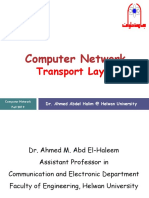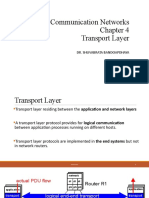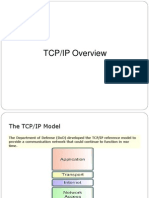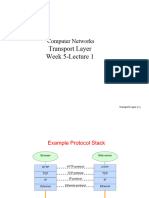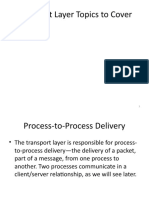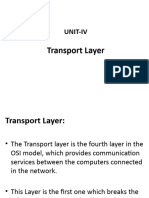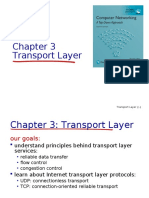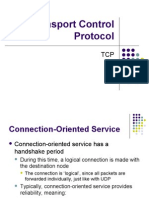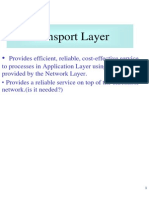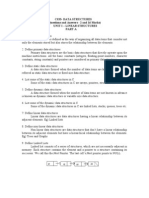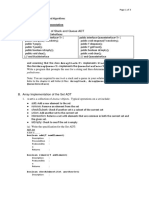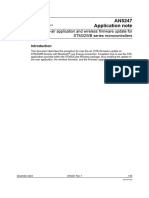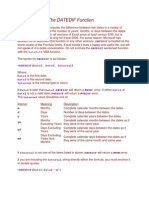0% found this document useful (0 votes)
20 views23 pagesLect 3
Here are the key steps in how UDP protocol and port numbers are utilized in client-server communication:
1. A client application on Host A wants to communicate with a server application on Host Z.
2. The client application is associated with a specific UDP port number, let's say port 1028.
3. The server application is associated with its own well-known UDP port number, let's say port 161.
4. When sending a UDP datagram, the client fills in the source port as 1028 and the destination port as 161.
5. The UDP header, including these port numbers, is added to the datagram.
6. The datagram is passed to the IP layer
Uploaded by
mmnw.coetCopyright
© © All Rights Reserved
We take content rights seriously. If you suspect this is your content, claim it here.
Available Formats
Download as PDF, TXT or read online on Scribd
0% found this document useful (0 votes)
20 views23 pagesLect 3
Here are the key steps in how UDP protocol and port numbers are utilized in client-server communication:
1. A client application on Host A wants to communicate with a server application on Host Z.
2. The client application is associated with a specific UDP port number, let's say port 1028.
3. The server application is associated with its own well-known UDP port number, let's say port 161.
4. When sending a UDP datagram, the client fills in the source port as 1028 and the destination port as 161.
5. The UDP header, including these port numbers, is added to the datagram.
6. The datagram is passed to the IP layer
Uploaded by
mmnw.coetCopyright
© © All Rights Reserved
We take content rights seriously. If you suspect this is your content, claim it here.
Available Formats
Download as PDF, TXT or read online on Scribd
/ 23










